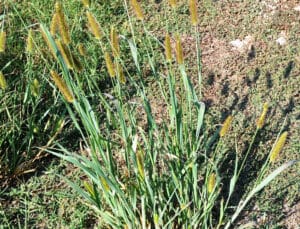Polka Dot Begonia
(Maculata Variegata)
Description
The wide variety of begonias always surprises me! There are so many different types and some look completely different from what you would expect. Like this Polka Dot Begonia!
Just look at those leaves! This plant doesn’t require full sun, so an easterly or westerly window is fine. Be careful not to overwater this one and allow the soil to dry out between waterings.
Planting
Polka Dot Begonia may seem picky, but once you get it settled into a good place with light and water (and away from heat and AC vents), it is relatively easy to care for. For this reason, we’re rating this houseplant as suitable for beginners. Like most houseplants, Polka Dot Begonia likes temperatures similar to human-preferred temperatures – between 65 and 75 degrees, but no higher than 85 degrees. Keep temperatures even with minimal fluctuation to keep houseplants happy.
Watering
Yellow leaves are also a common sign of overwatering, so make sure your plant is not sitting in water. Moisture Meters are a great way to test the bottom of the pot to make sure it’s not saturated (which can cause root rot in most houseplants). Crispy, brown spots on the leaves can indicate that the plant is getting too much sun.
Fertilizing
Polka Dot Begonia can tolerate higher levels of light, but be prepared for accelerated growth with more frequent waterings and fertilizer. If you notice a loss of color in the leaves followed by yellowing and ultimately the loss of the leaf, try moving it into more sun.
Pruning
If your Begonia is getting leggy, or you just want to shape it a bit, you can pinch it back. Trim back long stems to help your plant conserve energy during the cold winter. No worries, it will all grow back, plus more when spring comes. Pinching can be done throughout the active growing season. Use your finger and thumb to ‘pinch’ or remove the small stems that branch off from the main stem. This will encourage the plant to branch out by sprouting two new stems where you pinched the one.
| Growing Information |  |
| Mature Height: | 6 inches |
| Mature Width: | |
| Sunlight: | Partial Sun/Shade |
| Bloom Time: | xx |
| Growth Rate: | Easy |
| Grows Well In Zones: | Indoors |
| Your Growing Zone: | 6 |






